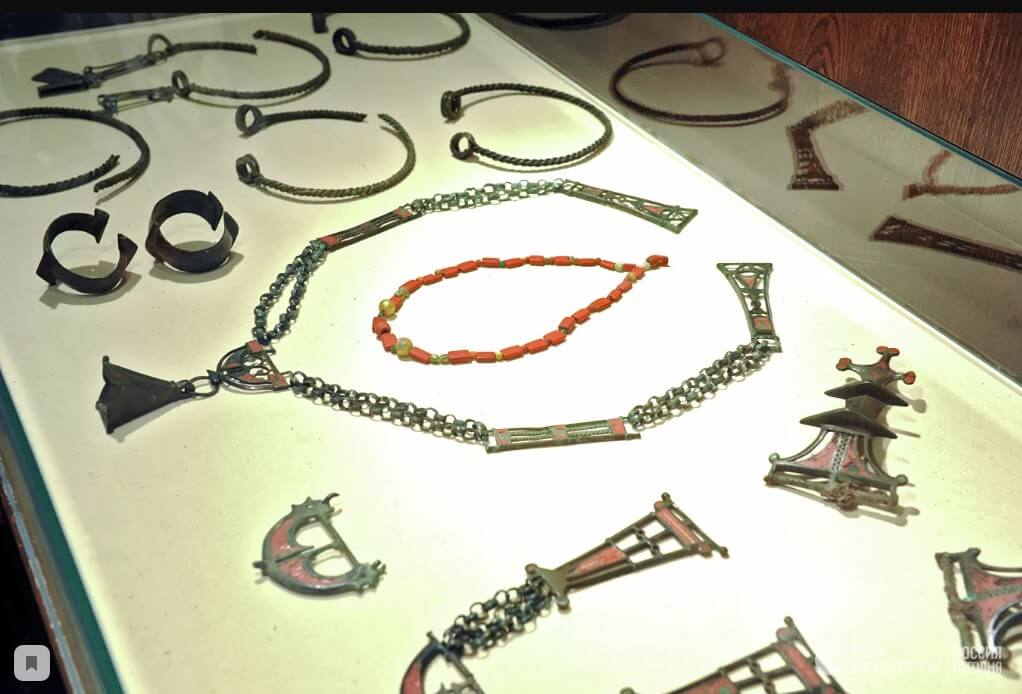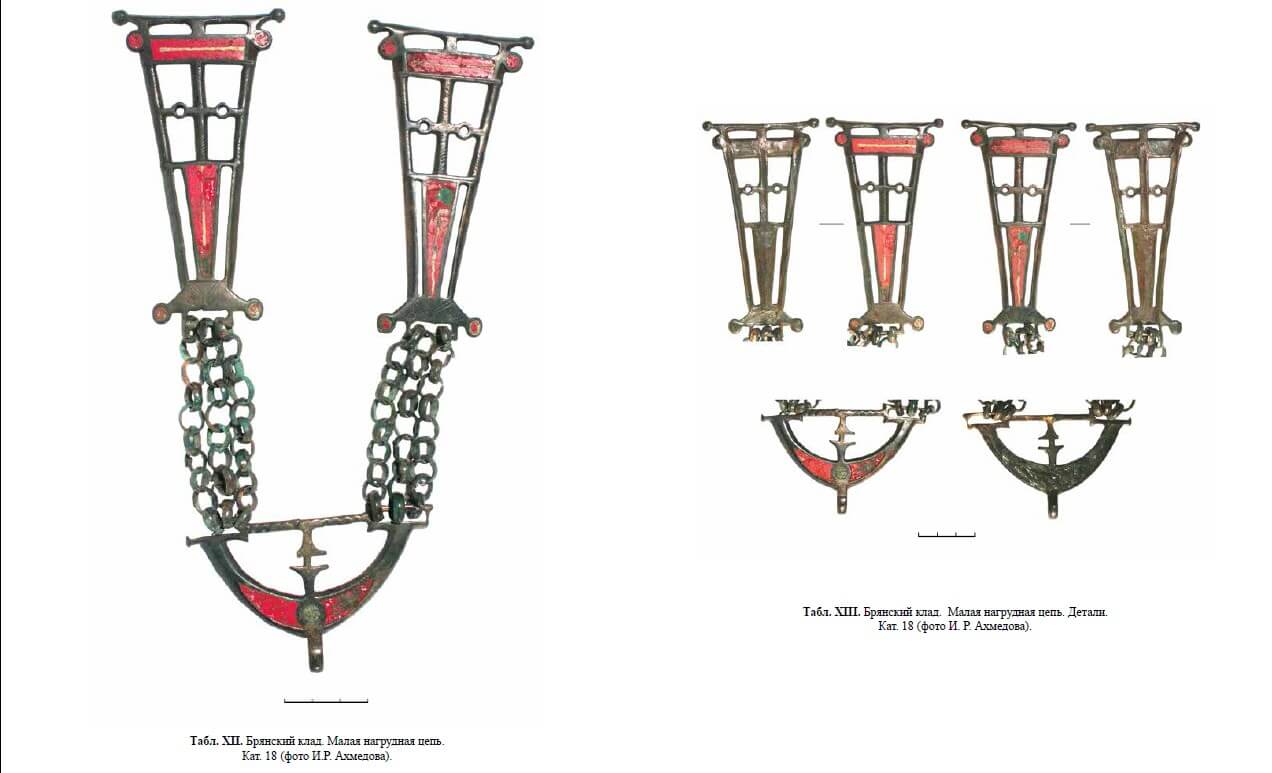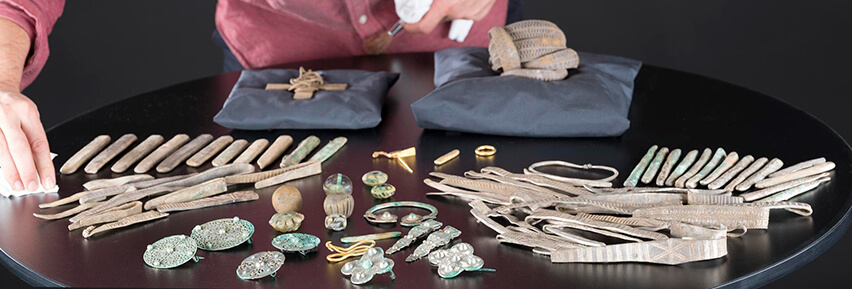Bryansk treasure, the most famous complex of ancient Slavic jewelry seized from a “black” digger
In August 2012, a unique exhibition opened in the exhibition hall of the State Historical Museum (Red Square, building 1). Items previously confiscated from a resident of the Bryansk region were put on display for the public to see. The name of this citizen was not indicated in any media, but they gave a clear definition that he is a black digger, a black archaeologist and an illegal treasure hunter. Separately, it is worth noting that in all, absolutely all sources of information about the Bryansk treasure, the same phrase appears.
«The measures taken by the security authorities managed to establish the identity of the «black» digger and persuade him to voluntarily hand over to the state»

Help:Bryansk treasure (At the place of discovery of the Suzem treasure). The most complete and thoroughly studied set of jewelry dating back to approximately the 2nd-3rd centuries AD. The treasure consists of details of status jewelry of ancient Slavs. According to data from various sources, the composition of the treasure ranges from 150 to 270 items. A distinctive feature of the treasure is the jewelry technique of Eastern European cloisonné enamels. Such jewelry technology was widespread among the peoples of Eastern Europe in the 2nd-4th centuries AD. Until now, in the scientific community, there are debates about the origin and place of manufacture of such status jewelry. According to archaeologists, the peoples of Eastern Europe, at that time, were in a state — quote: “primitivism of archaeological culture.” Then, the production of such items required high technological and artistic culture.

How the Bryansk treasure was found?Here, again, there is no reliable data, there is only some fragmentary data. According to which, in 2010, archaeologists from Tver reported to the Institute of Archives of the Russian Academy of Sciences that they had received photographs of a treasure trove of ancient Slavic jewelry from a certain closed Internet forum. There was a discussion on the forum about how much such a treasure could cost and where it could be sold?
The Directorate of the Institute of Archives of the Russian Academy of Sciences decided to contact the FSB with a request to carry out operational measures to locate the seller and the treasure itself. Two years later, FSB officers in the Bryansk region called the Institute of Archeology of the Russian Academy of Sciences and reported that they had the entire treasure.
Then there was a ceremonial transfer of the treasure, presentation and exhibition at the State Historical Museum.

Important. The next year, after the treasure was transferred to the State Historical Museum, the archaeologists of this museum went on an expedition to the sites where the treasure was discovered. Excavations were carried out and as a result they discovered the remains of an enamel coating and nothing more. No traces of an archaeological object or cultural layer were found at the site. That is, this is an absolutely pure treasure according to legal standards.
There is no information anywhere about where the Bryansk treasure can now be seen. Most likely it was put away for storage in the funds of the State Historical Museum. The treasure hunter, who was inclined to hand over the treasure, did not receive any compensation or other form of encouragement.

I think a story can be told as an objective point of view on this situation.
In 2014 in Scotland, a licensed treasure hunter. A complex of objects now known as Galloway Viking Hoard was found. The treasure includes approximately 100 items dating from the 13th-10th centuries. Treasure hunter Derak McLenan first discovered about ten items, following the norms of British law, he declared the treasure found, handed over the valuables to the coroner and reported the location of the find. Subsequently, professional archaeologists arrived at the site and carried out full-scale excavations. As a result, approximately 50 more items from the treasure were discovered. After the archaeologists finished excavating at a depth of 60 cm, Derak McLennan scanned the soil again with a metal detector and found the tritium level of the treasure.

Derak McLenan received a cash award of £1.98 million .
The Galloway Viking Hoard is on permanent display at the Museum of Scotland. A visiting program was planned for 2021. During which it was planned to hold traveling exhibitions in 4 museums in Britain.
